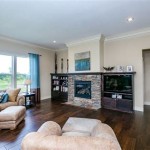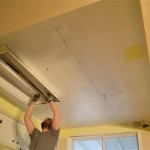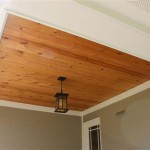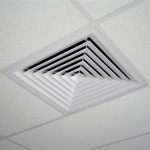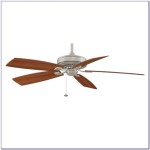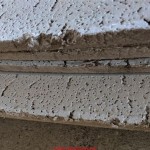False Ceiling Design Images For Living Room: A Comprehensive Guide
The living room, often considered the heart of a home, serves as a space for relaxation, entertainment, and social interactions. Its design plays a significant role in influencing the overall ambiance and aesthetic appeal of the residence. Among the various design elements, the ceiling often remains an overlooked canvas with immense potential. The incorporation of a false ceiling, also known as a dropped ceiling or suspended ceiling, can dramatically transform the living room, adding both functional and visual benefits. Exploring different false ceiling design images for the living room is crucial for homeowners and interior designers seeking to enhance this vital space.
This article aims to provide a comprehensive overview of false ceiling designs for living rooms, encompassing various styles, materials, and considerations for effective implementation. By examining diverse design options and their respective advantages, readers can gain valuable insights into selecting the most suitable false ceiling solution for their living room.
Understanding the Purpose and Benefits of False Ceilings
False ceilings are secondary ceilings suspended below the main structural ceiling. They are constructed using a framework of metal or wood, which is then covered with panels made of various materials. The primary purpose of a false ceiling extends beyond mere aesthetics. They offer a range of functional benefits, including:
*Concealing Unsightly Elements:
False ceilings effectively hide exposed wiring, plumbing, and ductwork, providing a clean and uncluttered appearance to the living room. This is particularly beneficial in older buildings with exposed infrastructure. *Improving Acoustics:
Certain false ceiling materials, such as acoustic tiles or panels, can significantly improve the sound quality within the living room. They absorb sound waves, reducing echo and reverberation, creating a more comfortable and enjoyable environment for conversation and entertainment. *Enhancing Energy Efficiency:
The space between the structural ceiling and the false ceiling acts as an insulation layer, helping to regulate the temperature within the room. This reduces the need for excessive heating or cooling, leading to energy savings. *Providing Lighting Integration:
False ceilings offer an ideal platform for integrating various lighting fixtures, such as recessed lights, spotlights, and pendant lights. This allows for customized lighting schemes that can enhance the ambiance and functionality of the living room. *Adding Aesthetic Appeal:
False ceilings can be customized in a wide range of designs, colors, and textures, adding visual interest and personality to the living room. They can be used to create specific architectural styles or to complement the existing décor.The benefits of integrating a false ceiling in the living room extend beyond mere aesthetics. By carefully considering the functional advantages alongside the visual appeal, homeowners can create a space that is both beautiful and practical.
Exploring Different False Ceiling Materials
The choice of material for a false ceiling significantly impacts its appearance, performance, and cost. Several materials are commonly used for false ceiling construction, each with its own unique characteristics:
*Gypsum Board:
Gypsum board, also known as drywall or plasterboard, is a widely used material for false ceilings due to its affordability, versatility, and ease of installation. It is a non-combustible material that offers good fire resistance. Gypsum boards can be easily cut and shaped to create various designs, and they can be painted or finished with different textures. However, gypsum board is susceptible to moisture damage and may not be suitable for areas with high humidity. *Plaster of Paris (POP):
POP is a quick-setting plaster made from gypsum. It is a versatile material that can be molded into intricate designs and shapes. POP ceilings are known for their smooth, seamless finish and their ability to create a luxurious and elegant look. However, POP ceilings require skilled craftsmanship for installation, and they are more prone to cracking than gypsum board ceilings. *Wood:
Wooden false ceilings offer a warm and natural aesthetic to the living room. They can be constructed from solid wood, plywood, or engineered wood products. Wooden ceilings can be stained, painted, or varnished to achieve different looks. They are durable and can provide good insulation. However, wooden ceilings are more expensive than gypsum board or POP ceilings, and they require regular maintenance to prevent warping or insect infestation. *Metal:
Metal false ceilings are commonly used in commercial spaces, but they can also be incorporated into modern living rooms. They are durable, fire-resistant, and easy to clean. Metal ceilings can be made from aluminum, steel, or other metals, and they can be finished with powder coating or other protective coatings. They offer a sleek and contemporary look. *PVC:
PVC false ceilings are a cost-effective and moisture-resistant option for living rooms. They are lightweight, easy to install, and available in a wide range of colors and designs. PVC ceilings are not as durable as gypsum board or metal ceilings, but they are a good choice for areas with high humidity or moisture. *Acoustic Tiles:
Acoustic tiles are designed to absorb sound and reduce echo in a room. They are typically made from mineral fiber, fiberglass, or recycled materials. Acoustic tiles can be used as a full false ceiling or as accents to improve the acoustics of the living room.Selecting the appropriate material for a false ceiling requires careful consideration of the desired aesthetic, budget, functional requirements, and environmental conditions.
Exploring Different False Ceiling Design Styles
The design of a false ceiling can significantly impact the overall aesthetic of the living room. Numerous design styles can be implemented, ranging from simple and minimalist to elaborate and ornamental. Some popular design styles include:
*Simple and Flat:
This is the most basic type of false ceiling, consisting of a flat, suspended surface. It is a cost-effective and versatile option that can be used in a variety of living rooms. Simple flat ceilings can be customized with different colors, textures, and lighting fixtures. *Tiered or Stepped:
Tiered or stepped false ceilings create a sense of depth and dimension in the living room. They consist of multiple layers of ceiling panels, each at a different height. Tiered ceilings can be used to highlight certain areas of the room or to create a focal point. *Coved or Curved:
Coved or curved false ceilings add a touch of elegance and sophistication to the living room. They feature smooth, rounded edges that create a soft and flowing look. Coved ceilings can be used to conceal lighting fixtures or to create a more intimate atmosphere. *Grid or Coffered:
Grid or coffered false ceilings create a geometric pattern on the ceiling. They consist of a network of beams or panels that form square or rectangular recesses. Coffered ceilings can add a sense of grandeur and formality to the living room. *Suspended or Floating:
Suspended or floating false ceilings create the illusion that the ceiling is floating in mid-air. They are typically constructed using a lightweight frame and concealed supports. Suspended ceilings can add a modern and minimalist touch to the living room. *Themed or Custom:
Themed or custom false ceilings allow for unique and personalized designs. They can incorporate various elements, such as murals, sculptures, or lighting effects, to create a specific atmosphere or to reflect the homeowner's personality.Selecting the appropriate design style for a false ceiling requires careful consideration of the existing décor, the size and shape of the living room, and the desired aesthetic. Viewing different false ceiling design images for living rooms can provide valuable inspiration and guidance in making this decision.
In addition to the design style, other factors to consider when selecting a false ceiling include the lighting scheme, the color palette, and the overall theme of the living room. The false ceiling should complement the other elements of the room and create a cohesive and harmonious look.
The integration of lighting is a crucial aspect of false ceiling design. Recessed lights, spotlights, and pendant lights can be strategically placed within the false ceiling to create different lighting effects. Dimmers can be used to adjust the brightness of the lights and create different moods. The lighting scheme should be carefully planned to ensure that the living room is adequately illuminated and that the desired ambiance is achieved.
The color palette of the false ceiling should also complement the other colors in the living room. Light colors can make the room feel larger and more airy, while dark colors can create a more intimate and cozy atmosphere. The color of the false ceiling can also be used to highlight certain features of the room or to create a focal point.
By carefully considering all of these factors, homeowners can select a false ceiling that is both beautiful and functional, and that enhances the overall aesthetic of their living room.

Modern False Ceiling Designs For Drawing Rooms Elevate Your Space Beautiful Homes

Best False Ceiling Design Ideas For Living Rooms In 2025 Gyproc

30 Minimalist False Ceiling Designs For Living Room Interior Design

Stunning Ceiling Design Ideas For Drawing Rooms
.jpg?strip=all)
Fall Ceiling Designs 2025 For Bedroom

Is False Ceiling Important For Your Living Room Shilpakala Blog

Top 100 Living Room False Ceiling Design Ideas 2024 Pop Designs For

False Ceiling Ideas To Enhance Your Living Room Euphoriainteriors

All You Need To Know About Pvc Ceilings Beautiful Homes

60 Latest Pop Ceiling Designs For Hall 2025
Related Posts

